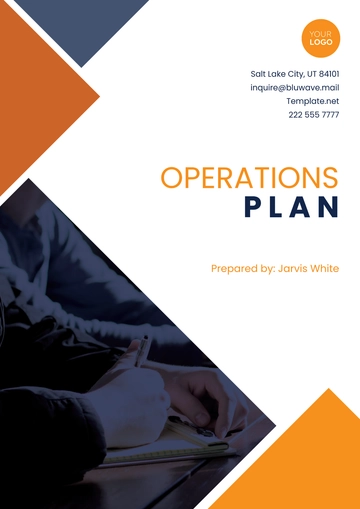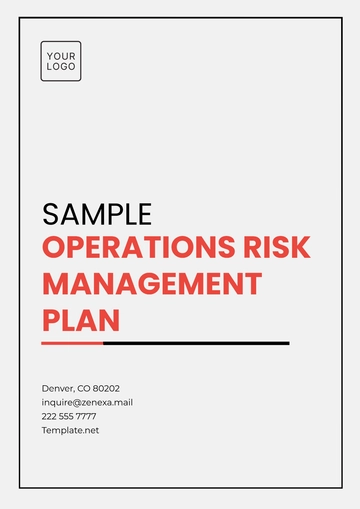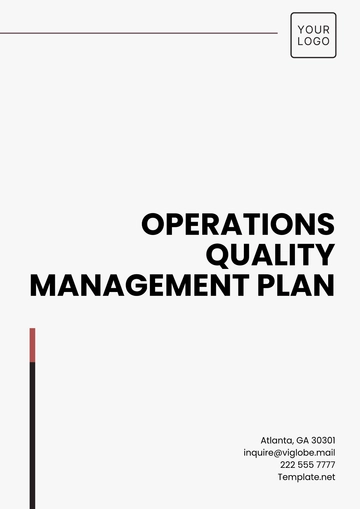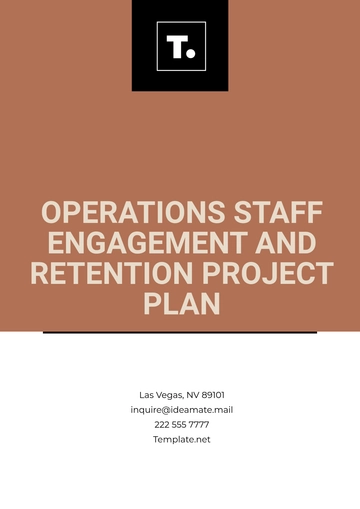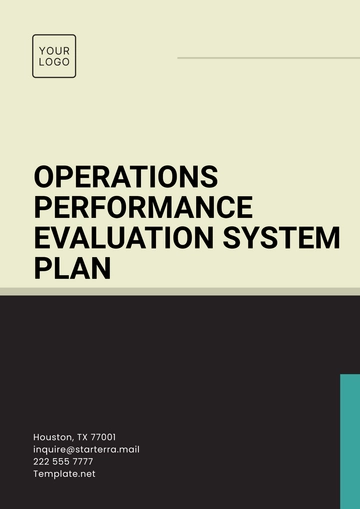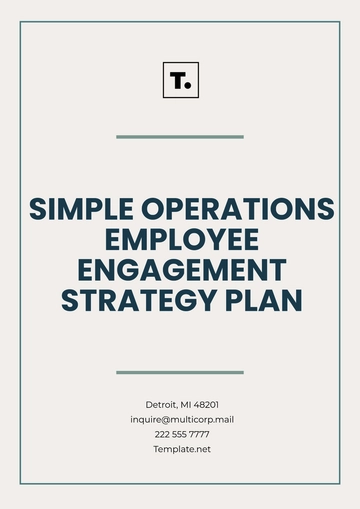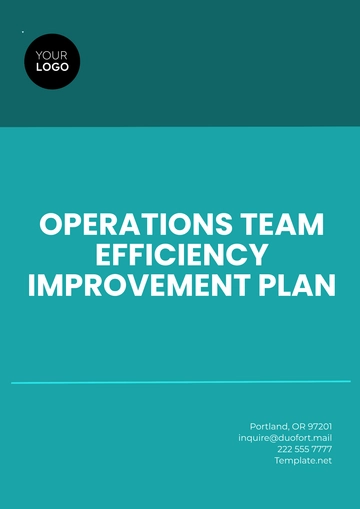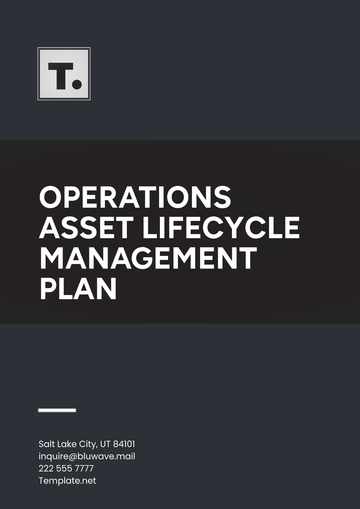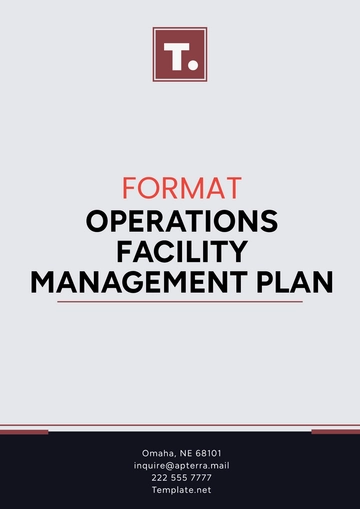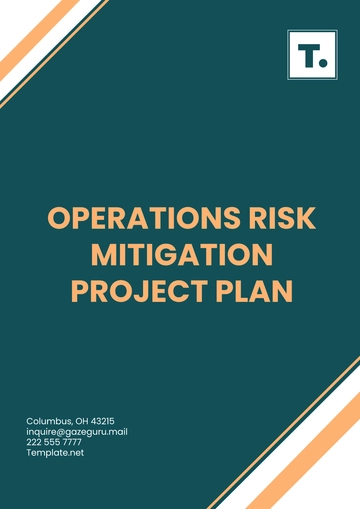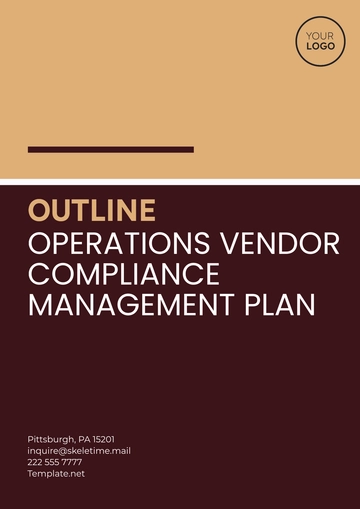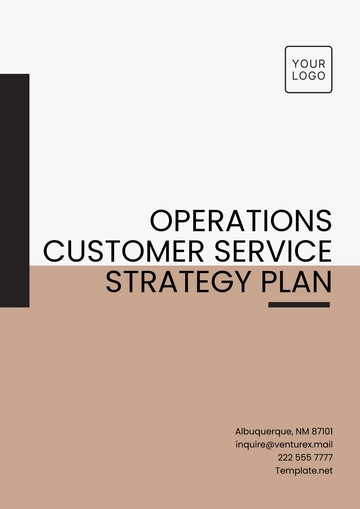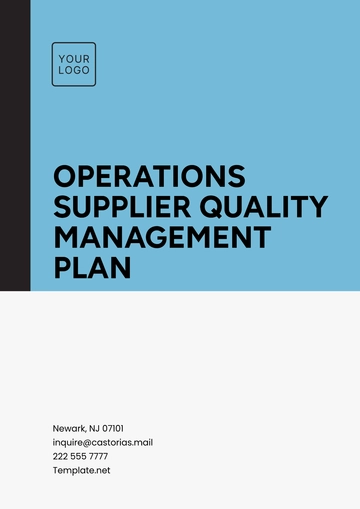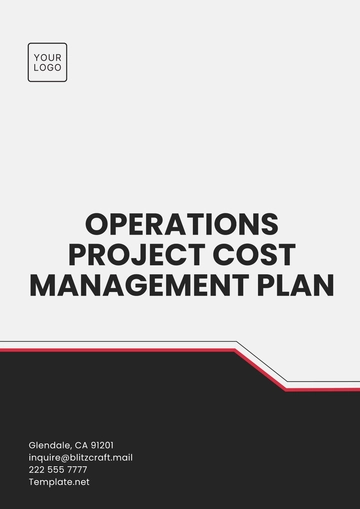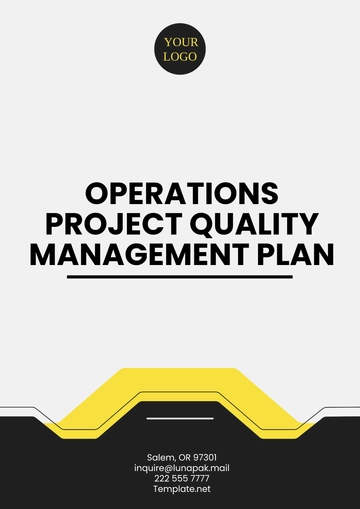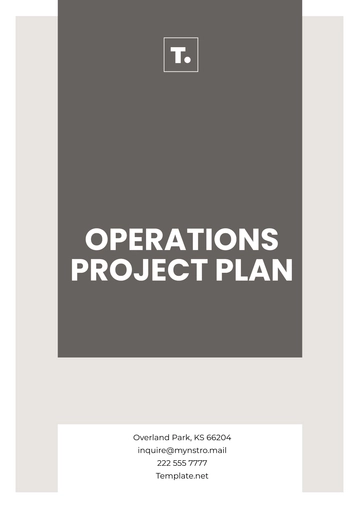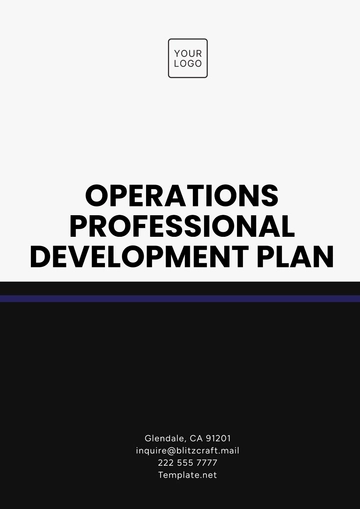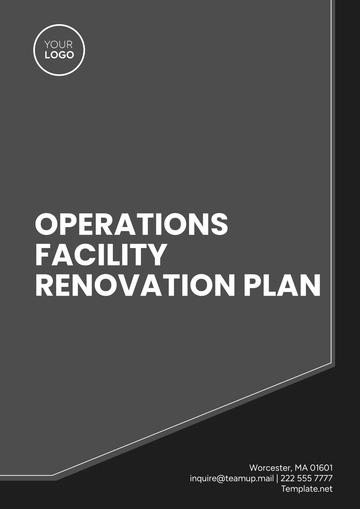Free Club Operational Plan
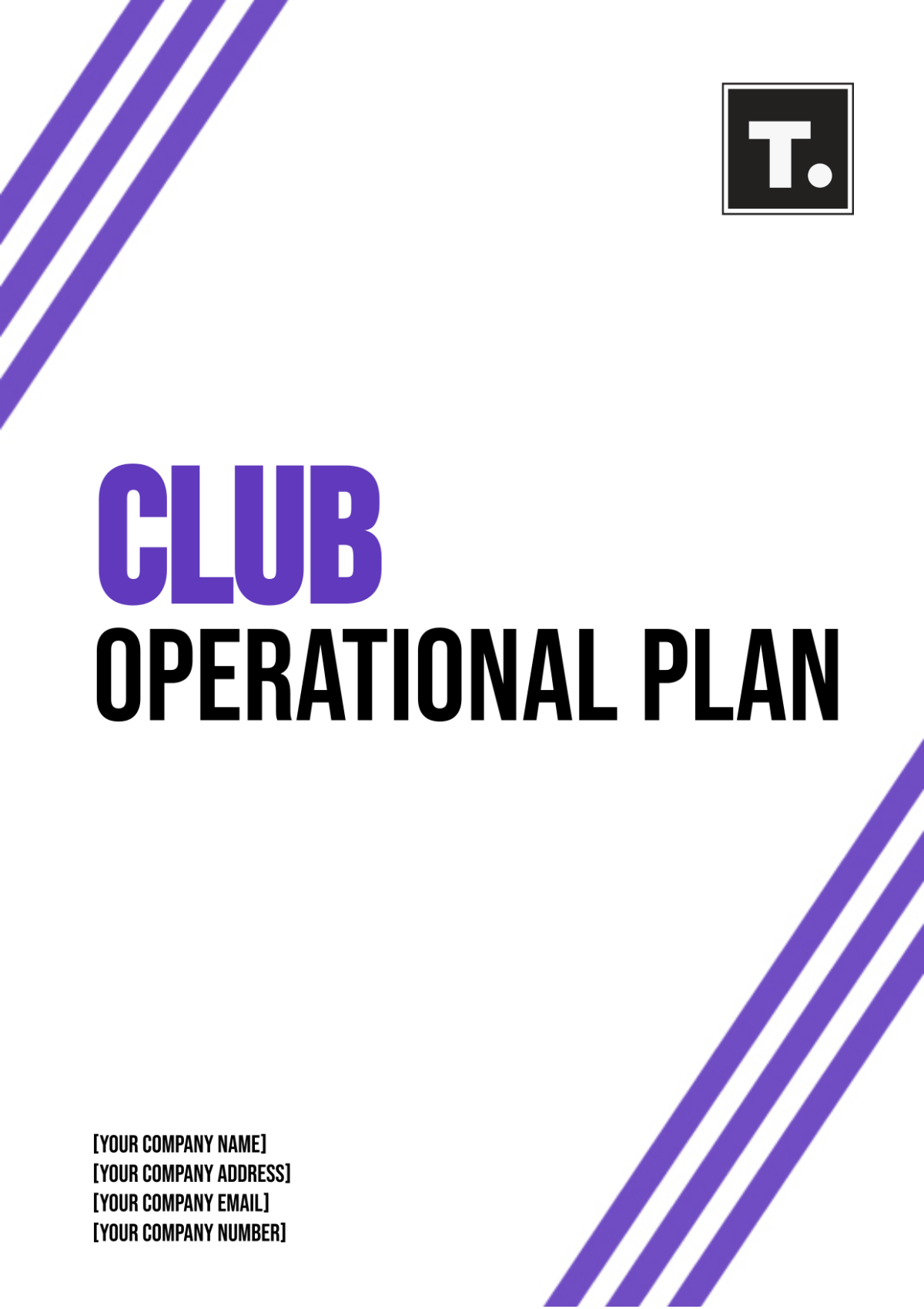
I. Executive Summary
Operational Plan for 2055 outlines the strategic direction, operational objectives, and key initiatives to drive success and growth. This plan aims to provide clarity and guidance for club management, members, and stakeholders.
II. Club Profile
A. Mission Statement
The mission of [Your Company Name] is to foster a vibrant community of gamers, providing opportunities for connection, competition, and collaboration.
B. Club Overview
Founded: 2055
Membership: 200
Club Type: Social
Club Structure: Hierarchical
Key Activities: Weekly gaming meetups, tournaments, workshops
III. Strategic Objectives
A. Short-Term Objectives (1-3 years)
Increase membership by 20% within the next year.
Enhance member engagement through regular events and activities.
Strengthen community partnerships to support club initiatives.
B. Long-Term Objectives (3-5 years)
Establish a sustainable funding model for club operations.
Expand club outreach programs to underserved communities.
Achieve recognition as a leading gaming club in the region.
IV. Operational Strategies
A. Membership Growth
Implement targeted marketing campaigns to attract new members.
Offer membership discounts for referrals and renewals.
Host membership drives and open house events.
B. Event Management
Develop an annual events calendar with diverse activities.
Establish event committees to plan and execute club events.
Secure sponsorships and partnerships to fund events.
C. Financial Management
Create a detailed budget for each fiscal year.
Explore fundraising opportunities such as grants and sponsorships.
Monitor expenses and revenue to ensure financial sustainability.
V. Communication Plan
A. Internal Communication
Utilize online platforms for member communication and collaboration.
Conduct regular meetings with club leadership and committees.
Establish clear channels for feedback and suggestions.
B. External Communication
Maintain an active presence on social media platforms.
Publish regular newsletters and updates for members and stakeholders.
Cultivate relationships with local media for club publicity.
VI. Governance and Leadership
A. Leadership Structure
Define roles and responsibilities for club officers and committees.
Conduct regular elections or appointments for leadership positions.
Provide training and support for incoming leaders.
B. Decision-Making Process
Adopt a democratic decision-making process for major club decisions.
Establish committees or task forces to address specific issues.
Ensure transparency and accountability in decision-making.
VII. Risk Management
A. Risk Identification
Identify potential risks to club operations and activities.
Conduct risk assessments regularly to prioritize threats.
B. Risk Mitigation
Develop contingency plans for unforeseen events or emergencies.
Obtain appropriate insurance coverage for club activities.
Implement safety protocols and guidelines for club events.
VIII. Financial Projections
Financial Projections for 2055
Revenue Sources | Amount ($) |
|---|---|
Membership Fees | $10,000 |
Sponsorships | $5,000 |
Fundraising Events | $3,000 |
Donations | $2,000 |
Total Revenue | $20,000 |
Expenses
Expense Categories | Amount ($) |
|---|---|
Administrative | $4,000 |
Event Management | $6,000 |
Marketing | $2,000 |
Facility Rentals | $3,000 |
Total Expenses | $15,000 |
IX. SWOT Analysis
Strengths
Established brand and reputation within the community.
Dedicated and passionate club members and leadership.
A diverse range of activities and programs.
Weaknesses
Limited financial resources for expansion and development.
Reliance on volunteer efforts for event management and operations.
Lack of formalized training and development programs for members.
Opportunities
Strategic partnerships with local businesses and organizations.
Expansion into new markets or demographics.
Leveraging technology for enhanced member engagement and communication.
Threats
Competition from other clubs or similar organizations.
Economic downturns affect membership and sponsorship revenue.
Regulatory changes impacting club operations.
- 100% Customizable, free editor
- Access 1 Million+ Templates, photo’s & graphics
- Download or share as a template
- Click and replace photos, graphics, text, backgrounds
- Resize, crop, AI write & more
- Access advanced editor
Introducing the Club Operational Plan Template, meticulously crafted by Template.net for comprehensive planning and management of club activities and operations. This customizable document empowers club managers and organizers to outline their operational goals, event schedules, membership management strategies, and resource allocations. With editable features and a user-friendly layout, it facilitates tailored operational planning to meet specific club objectives and member needs. Streamline your club management process and gain valuable insights into optimizing activities, enhancing member engagement, and managing resources effectively. Elevate your club’s success with this versatile template, your essential tool for achieving operational excellence and member satisfaction.
You may also like
- Finance Plan
- Construction Plan
- Sales Plan
- Development Plan
- Career Plan
- Budget Plan
- HR Plan
- Education Plan
- Transition Plan
- Work Plan
- Training Plan
- Communication Plan
- Operation Plan
- Health And Safety Plan
- Strategy Plan
- Professional Development Plan
- Advertising Plan
- Risk Management Plan
- Restaurant Plan
- School Plan
- Nursing Home Patient Care Plan
- Nursing Care Plan
- Plan Event
- Startup Plan
- Social Media Plan
- Staffing Plan
- Annual Plan
- Content Plan
- Payment Plan
- Implementation Plan
- Hotel Plan
- Workout Plan
- Accounting Plan
- Campaign Plan
- Essay Plan
- 30 60 90 Day Plan
- Research Plan
- Recruitment Plan
- 90 Day Plan
- Quarterly Plan
- Emergency Plan
- 5 Year Plan
- Gym Plan
- Personal Plan
- IT and Software Plan
- Treatment Plan
- Real Estate Plan
- Law Firm Plan
- Healthcare Plan
- Improvement Plan
- Media Plan
- 5 Year Business Plan
- Learning Plan
- Marketing Campaign Plan
- Travel Agency Plan
- Cleaning Services Plan
- Interior Design Plan
- Performance Plan
- PR Plan
- Birth Plan
- Life Plan
- SEO Plan
- Disaster Recovery Plan
- Continuity Plan
- Launch Plan
- Legal Plan
- Behavior Plan
- Performance Improvement Plan
- Salon Plan
- Security Plan
- Security Management Plan
- Employee Development Plan
- Quality Plan
- Service Improvement Plan
- Growth Plan
- Incident Response Plan
- Basketball Plan
- Emergency Action Plan
- Product Launch Plan
- Spa Plan
- Employee Training Plan
- Data Analysis Plan
- Employee Action Plan
- Territory Plan
- Audit Plan
- Classroom Plan
- Activity Plan
- Parenting Plan
- Care Plan
- Project Execution Plan
- Exercise Plan
- Internship Plan
- Software Development Plan
- Continuous Improvement Plan
- Leave Plan
- 90 Day Sales Plan
- Advertising Agency Plan
- Employee Transition Plan
- Smart Action Plan
- Workplace Safety Plan
- Behavior Change Plan
- Contingency Plan
- Continuity of Operations Plan
- Health Plan
- Quality Control Plan
- Self Plan
- Sports Development Plan
- Change Management Plan
- Ecommerce Plan
- Personal Financial Plan
- Process Improvement Plan
- 30-60-90 Day Sales Plan
- Crisis Management Plan
- Engagement Plan
- Execution Plan
- Pandemic Plan
- Quality Assurance Plan
- Service Continuity Plan
- Agile Project Plan
- Fundraising Plan
- Job Transition Plan
- Asset Maintenance Plan
- Maintenance Plan
- Software Test Plan
- Staff Training and Development Plan
- 3 Year Plan
- Brand Activation Plan
- Release Plan
- Resource Plan
- Risk Mitigation Plan
- Teacher Plan
- 30 60 90 Day Plan for New Manager
- Food Safety Plan
- Food Truck Plan
- Hiring Plan
- Quality Management Plan
- Wellness Plan
- Behavior Intervention Plan
- Bonus Plan
- Investment Plan
- Maternity Leave Plan
- Pandemic Response Plan
- Succession Planning
- Coaching Plan
- Configuration Management Plan
- Remote Work Plan
- Self Care Plan
- Teaching Plan
- 100-Day Plan
- HACCP Plan
- Student Plan
- Sustainability Plan
- 30 60 90 Day Plan for Interview
- Access Plan
- Site Specific Safety Plan
